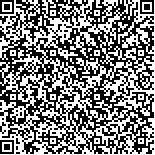附件
|
| 引用本文: | 赖格英,易姝琨,刘维,盛盈盈,彭小娟,熊家庆,潘思怡,吴青.基于修正SWAT模型的岩溶地区非点源污染模拟初探——以横港河流域为例.湖泊科学,2018,30(6):1560-1575. DOI:10.18307/2018.0608 |
| LAI Geying,YI Shukun,LIU Wei,SHENG Yinyin,PENG Xiaojuan,XIONG Jiaqing,PAN Siyi,WU Qing.Non-point source pollution simulation in karst region based on modified SWAT Model-A case study in Henggang River Basin. J. Lake Sci.2018,30(6):1560-1575. DOI:10.18307/2018.0608 |
|
| |
|
|
| 本文已被:浏览 6248次 下载 4043次 |

码上扫一扫! |
|
|
| 基于修正SWAT模型的岩溶地区非点源污染模拟初探——以横港河流域为例 |
|
赖格英1,2, 易姝琨1, 刘维1, 盛盈盈1, 彭小娟1, 熊家庆1, 潘思怡1, 吴青1
|
|
1.江西师范大学地理与环境学院, 南昌 330022;2.鄱阳湖湿地与流域研究教育部重点实验室, 南昌 330022
|
|
| 摘要: |
| 岩溶流域含水系统的主要特征之一是连通地表的落水洞等垂直管道将近水平的地下暗河联系起来,降水及其形成的地表径流可以通过这些管道迅速地灌入地下河系,从而改变了水及其所携带的非点源污染物质在垂直与水平方向的传输速度与数量,使岩溶流域内地表-地下之间的物质交换与传输过程变得比较复杂;应用广泛的SWAT模型在模拟岩溶地区的水文、水质时会存在一些不足与局限.为此,本文针对岩溶水系统特征,引入落水洞、伏流、暗河的水文过程以及主要营养盐的输移过程,修正SWAT模型原有的水文循环过程及相关算法,改变其只适用于松散均匀介质流域非点源污染模拟的单一特征,并研究建立适合于岩溶流域的非点源污染模型和相应的模拟方法.选取横港河流域岩溶地区作为非点源污染的对象,应用修正后的模型通过控制性的模拟方法和敏感性性分析,定量评估落水洞、伏流、暗河等岩溶特征对氮、磷等主要非点源污染物质输移的影响及其带来的时空效应,并进一步探讨落水洞、伏流、暗河等对地表-地下水文与营养盐的交互作用及转换机理.结果表明,岩溶特征对流域的氮、磷负荷有增加作用,其中总磷的增加明显大于总氮的增加,总磷和总氮的增量分别为0.86%和2.12%;植被岩溶指数的增加会导致流域可溶性磷、有机磷的产出量增加,有机氮、地表产流中硝酸氮和沉积磷的产出量则居其次,落水洞改变了降雨的产流方式,增加了落水洞所在流域的有机磷和有机氮的产出,其增量变化在0~0.7和0~0.3 kg/hm2之间. |
| 关键词: 非点源污染 岩溶流域 SWAT模型 数值模拟 地下水 横港河流域 |
| DOI:10.18307/2018.0608 |
| 分类号: |
| 基金项目:国家自然科学基金项目(41171393,40971266)资助. |
|
| Non-point source pollution simulation in karst region based on modified SWAT Model-A case study in Henggang River Basin |
|
LAI Geying1,2, YI Shukun1, LIU Wei1, SHENG Yinyin1, PENG Xiaojuan1, XIONG Jiaqing1, PAN Siyi1, WU Qing1
|
|
1.School of Geography and Environment, Jiangxi Normal University, Nanchang 330022, P. R. China;2.Key Laboratory of Poyang Lake Wetland and Watershed Research, Nanchang 330022, P. R. China
|
| Abstract: |
| One of the main characteristics of water-bearing system in karst area is that the pipelines of sinkholes of the developing soluble rock are connected with the underground water network. The precipitation and its surface runoff can be quickly poured into the underground river system through the pipelines, the underground complex hydrology changed the aquifer's transmission mode and the transmission speed and quantity of the non-point source pollutants in the vertical and horizontal directions selected. The karst area in the Poyang Lake Watershed is selected as the object of non-point source pollution. This study examined the characteristics of karst water system, the hydrological process of introduce holes, underground river, and the main nutrient transfer process. The original hydrological cycle of SWAT, the related algorithms, the single feature of the non-point source pollution simulation in the loose homogeneous medium basin was modified. This study established the non-point source pollution model suitable for karst watershed and the corresponding simulation method. This modified model, through a controlled simulation method and a sensitivity analysis, is used to quantitatively evaluate the impact of the karst characteristics of water, including sinkholes, underground stream and river on nitrogen and phosphorus and other major non-point source of pollutant transport and its correspondent time and space effect. Furthermore, the interaction and conversion mechanism of sinkholes, underground stream, river with the surface-underground hydrology and nutrient salt was analyzed. The results showed that the karst characteristics had an increasing effect on the nitrogen and phosphorus load in the watershed. The increase of total phosphorus was significantly greater than the increase of total nitrogen, and the increase of total phosphorus and total nitrogen was 0.86% and 2.12%, respectively. The increase of vegetation karst index can cause the increase of the output of soluble phosphorus and organic phosphorus in the watershed, followed by the output of organic nitrogen and nitrate and nitrogen. The sinkholes changed the way of rainfall and increased the production of organic phosphorus and organic nitrogen, with the incremental change in the range of 0-0.7 kg/ha and 0-0.3 kg/ha, respectively. |
| Key words: Non-point source pollution karst basin SWAT model numerical simulation groundwater Henggang River Basin |
|
|
|
|